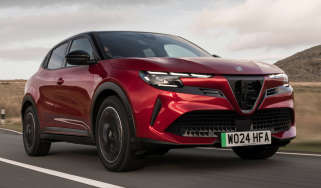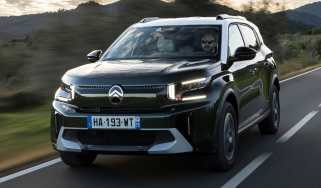Ford Kuga review - Practicality & boot space
"The Ford Kuga offers average practicality for the class, although the sliding rear bench is a nifty feature and it’s a good tow car"
People are now choosing family SUVs over hatchbacks more than ever thanks to the increased level of practicality they offer. The latest Ford Kuga is bigger in most respects than its predecessor, with a little more space freed up inside. It’s still strictly a five-seater, like many of its rivals, but Ford doesn’t offer a seven-seat SUV in the UK – you’ll need to look at one of its van-based MPVs if you need that capability. This seems like a missed opportunity, as the seven-seat Skoda Kodiaq, Peugeot 5008 and Kia Sorento SUVs have all proven popular.
We like the Ford Kuga’s neat pop-out door-edge protectors which help to mitigate any clumsy car-park dings. A long-standing Ford staple is the Quickclear heated windscreen, too, which helps you clear it much quicker on a frosty morning.
Thanks to its relatively boxy shape, there’s plenty of room for two adults up front and two in the rear; opting for the panoramic sunroof does impede headroom a little though, plus there’s a rather big hump in the floor meaning carrying three people abreast can be tight. The rear seats open widely enough to make access and the installation of child car seats pretty easy, too.
More reviews
Car trim reviews
In-depth reviews
- Ford Kuga review – a sharp-handling and efficient SUV
- Ford Kuga Plug-in Hybrid SUV review
- Ford Kuga SUV (2008-2012) review
Used car reviews
Because of where the battery pack is placed, plug-in hybrid Kuga models get a slightly smaller boot. Wherever the seats are, the boot is about 50-60 litres smaller than petrol and diesel variants. Yet, compared to some other PHEVs, that’s not a huge drop in luggage capacity.
Boot space
The Kuga has handy sliding rear seats, so you can position them to prioritise legroom or boot space. Even when slid all the way back, most Kuga models offer more space than the Focus – and this increases to 526 litres with the seats pulled forward (measured to the parcel shelf). With the rear seats flipped down and out of the way, you’ve got up to 1,534 litres to fill. A Skoda Karoq is slightly more practical, though, offering 479-588 litres with the seats up and 1,605 litres with them down. The Hyundai Tucson has even more space, with up to 610 litres on offer in petrol models, making it a top choice for load-lugging.
Because of where the battery pack’s placed, plug-in hybrid Kuga models get a slightly smaller boot. Wherever the seats are, the boot is about 50-60 litres smaller than petrol and diesel variants. Yet, compared to some other PHEVs, that’s not a huge drop in luggage capacity.
Towing
If you plan on towing regularly, make sure you pick the right engine, as all have different maximum towing capacities. Handily the Kuga’s towing weights also increased slightly when it was facelifted, which is good news for buyers. The maximum braked towing weight of 2,100kg is reserved for the 2.5-litre PHEV and four-wheel drive 2.5-litre FHEV, while the front-wheel drive FHEV sees this drop to 1,600kg. Pick the 1.5-litre petrol engine and it can still tow a decent 1,730kg, so every Kuga is pretty capable in this department.
Ford’s infotainment system offers some thoughtful features for towing too, from a safety checklist to look over before setting off with a trailer to a setting in the sat nav that will plan a route using roads that are better suited to driving with a trailer.















